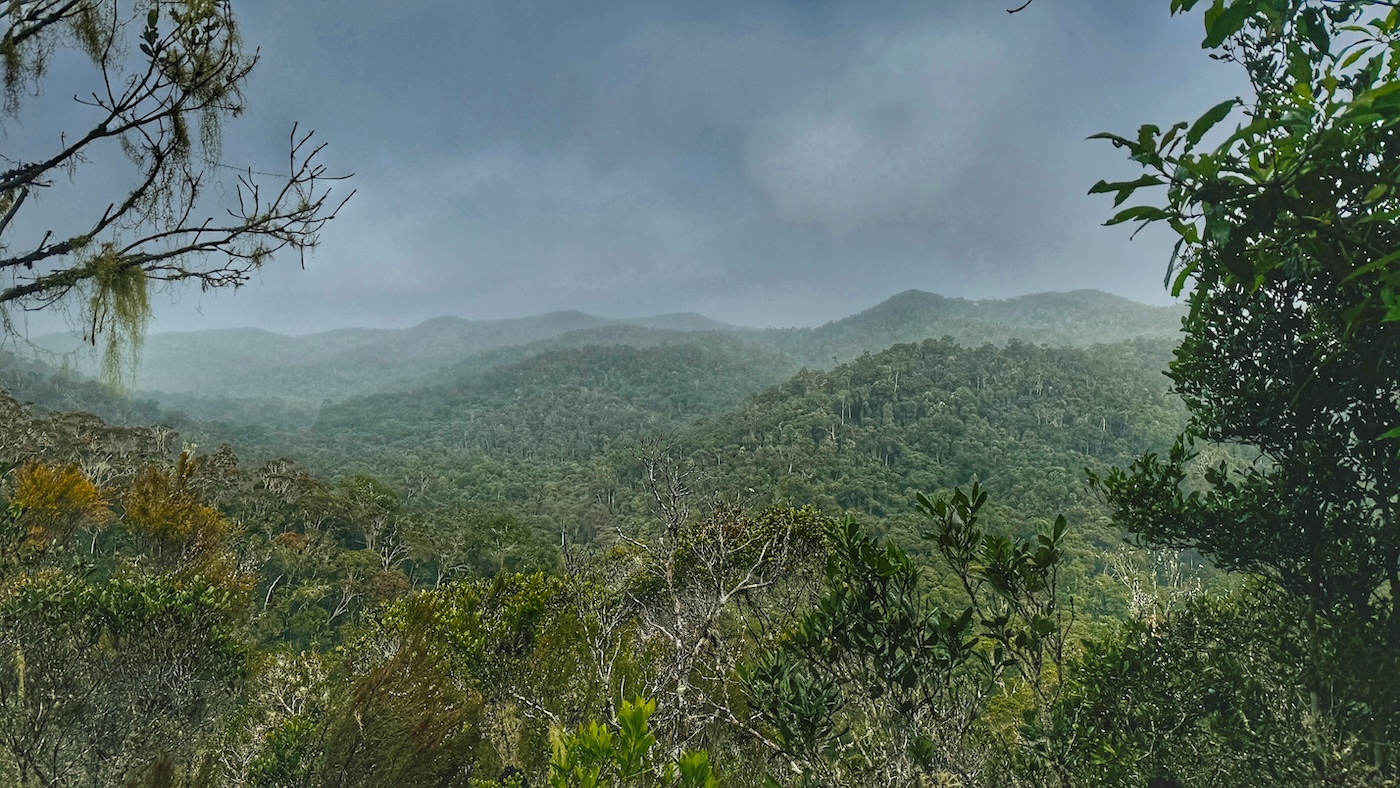Madagascar
I’ve just returned from Madagascar, that mythical land of lemurs, towering baobabs, and chameleons. For eight days, I found myself steeped in its wilderness, helping film a production for a camera brand. The icing on the cake was doing all of this with cinematographer Sudeep Elamon (Of the Ayyappanum Koshyum fame).
It was a rare, privileged opportunity—one that unveiled the raw, unfiltered beauty of a place where nature reigns. Around ten species of lemurs, chameleons shifting hues like a dance with the light, the chirp of endemic birds—every frame was a testament to Madagascar’s biological wealth. But beneath the canopy of lush biodiversity lies a stark, equally compelling story—one not of prosperity but of poverty.
Madagascar is a land divided, and it wasn’t long before this duality became strikingly apparent. On one hand, there’s the breathtaking privilege of witnessing some of the world’s rarest species in their natural habitat, and on the other, the heart-wrenching poverty that surrounds them.
The Natural Wonderland: Madagascar’s Ecological Wealth
Few places on Earth boast the kind of biodiversity Madagascar does. More than 80% of its species are endemic—found nowhere else in the world. Lemurs, for instance, are unique to this island, and their evolutionary path is nothing short of extraordinary. We filmed them, from the leaping sifakas to the loud Indri Indri to the creepy, nocturnal Aye-Aye’s. To witness them in their wild habitat, high up in Madagascar’s forests, feels like a privilege of the highest order. It’s as if the island holds its breath, waiting to reveal its secrets only to those willing to journey into its depths.
The land itself feels ancient, as if untouched by the forces that have shaped the rest of the world. You walk through dense forests and hear the whispers of evolution. The wildlife, the landscapes—they are at once delicate and resilient, hanging on in the face of human encroachment.


The Other Side: Poverty in Madagascar
But for all its natural wonder, Madagascar is one of the poorest countries in the world. It’s a jarring juxtaposition. Beyond the forests and nature reserves, a very different reality prevails. The average Malagasy citizen lives on less than $2 a day, and access to basic amenities like healthcare and education is sparse. Travelling through rural areas, we witnessed firsthand the extreme poverty—the kind that is humbling and heartbreaking in equal measure.
This contrast is a byproduct of Madagascar’s history. Once part of the French colonial empire, Madagascar was used and abused for its resources, its people marginalized. The scars of that era are still visible today. Independence came, but with it, decades of political instability, corruption, and mismanagement. Global aid flows in, but it’s a mere trickle compared to what’s needed to transform the nation.

Two Worlds Collide: Conservation vs. Survival
This stark division between wealth and poverty takes on an especially sharp edge when viewed through the lens of conservation. Conservationists urge the world to protect Madagascar’s biodiversity, to shield it from logging, mining, and exploitation. Yet, the local population—faced with no other option—often depends on these very practices to survive. It’s a grim irony: those who live closest to nature are often forced to destroy it, simply to feed their families.
As a wildlife enthusiast, you’re constantly negotiating this paradox. We arrived with sophisticated equipment to capture the marvel of lemurs leaping through the trees, while just miles away, deforestation unfolds as locals clear land to grow crops. The conservation movement in Madagascar is often at odds with the immediate needs of its people, and it’s easy to see why a balance has been so difficult to strike.

A History that Shaped the Divide
Madagascar’s modern challenges are inextricably linked to its past. The French colonization left an economic system designed to extract, not nurture. The people were left to fend for themselves after independence in 1960. The island’s political system has since lurched from one crisis to another—coup d’états, assassinations, and corruption—each one further undermining its fragile economy.
Yet, despite this, the Malagasy people remain warm, welcoming, and resilient. Everywhere we went, we were greeted with smiles and curiosity. But that doesn’t change the fact that the nation is in desperate need of systemic change—change that must prioritize both its people and its unique wildlife.

A Microcosm of Our World
The experience was a potent reminder that this isn’t just Madagascar’s story—it’s the story of our world. It’s easy to forget that we all live in divided worlds, where the privileges we enjoy are often underpinned by systems of inequality. Whether it’s environmental conservation or economic disparity, we are constantly navigating these two realities.
In Madagascar, this divide is magnified, writ large in its landscapes and people. But it’s a mirror reflecting the global tensions between the rich and the poor, between those who enjoy the luxuries of life and those who struggle just to survive.

The Path Forward
So, what’s the path forward for Madagascar? It’s a question that doesn’t have a simple answer. It will take a combination of political reform and intent, international aid, sustainable development, and, crucially, solutions that benefit both the people and the environment.
As storytellers, we came to capture the beauty of Madagascar’s wildlife, but we left with a deeper understanding of its people’s plight. The two are not separate stories—they are intimately connected. To protect Madagascar’s wildlife, we must also ensure that its people have the means to thrive.
Madagascar is not just a natural wonder; it’s a place where two worlds—wild and human—are constantly in tension. And until those worlds find harmony, neither can truly flourish.

All images shot on iPhone 15 Pro Max.

